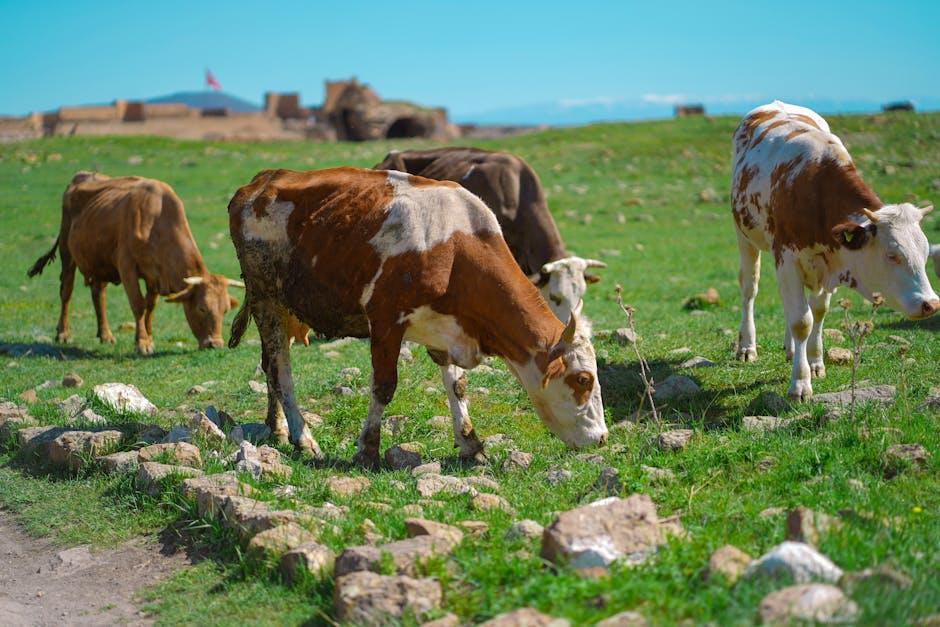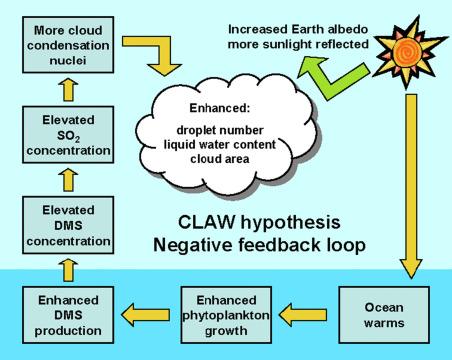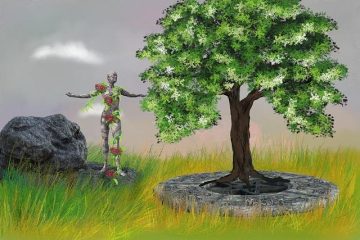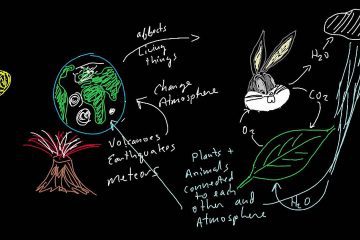Table of Contents
- Exploring the Gaia Hypothesis: Understanding Its Core Concepts
- The Impact of the Gaia Hypothesis on Environmental Science
- Engaging with Gaia: How to Create Compelling Educational Videos
- Practical Tips for Producing High-Quality Gaia Hypothesis Videos
- Resources for Further Learning and Exploration of the Gaia Hypothesis
- Q&A
- In Summary
Exploring the Gaia Hypothesis: Understanding Its Core Concepts
The Gaia Hypothesis presents a compelling perspective on our planet, suggesting that the Earth functions as a self-regulating system. According to this concept, all living organisms and their inorganic surroundings are interconnected, forming a complex web of interactions that promote conditions favorable to life. This means that each species, along with the elements of the physical environment, plays a vital role in sustaining the earth’s biosphere, regulating climate, and maintaining the chemical balance that supports life.
Central to the hypothesis is the idea that biological processes influence the Earth’s atmosphere, hydrosphere, and geology. Here are some core concepts that help elucidate this viewpoint:
- Interdependence: Life and the environment are tightly interwoven, with actions taken by one influencing the overall health of the system.
- Feedback Loops: Positive and negative feedback mechanisms help in the regulation of global conditions, adapting to changes in nature.
- Homeostasis: The Earth’s systems work towards maintaining balance, ensuring that life flourishes despite external stressors.
Understanding this hypothesis also requires recognizing its implications for environmental science and policy. Research suggests that human activities significantly impact these natural feedback systems, leading to climate change and biodiversity loss. Acknowledging this interconnectedness can foster a greater sense of responsibility and urgency in addressing ecological challenges. The visual representation of these concepts can help clarify their complexities, making it easier for us to grasp the delicate dance of life on Earth and our place within this grand narrative.

The Impact of the Gaia Hypothesis on Environmental Science
The Gaia Hypothesis has revolutionized the framework of environmental science by introducing a holistic view of Earth’s systems. This theory, initially proposed by James Lovelock, posits that living organisms interact with their inorganic surroundings to form a complex system that contributes to the maintenance and perpetuation of life on the planet. This perspective encourages scientists to consider interconnectedness and co-dependence within ecosystems, reshaping how environmental issues are addressed. With this paradigm, researchers are prompted to investigate not just the individual components of ecosystems, but also how these components work together to sustain life.
As a result of the influence of the Gaia Hypothesis, numerous research areas within environmental science have gained prominence. Notably, the focus has shifted toward understanding ecosystem services and their critical role in human well-being. Scholars are increasingly exploring concepts such as:
- Climate Regulation: How living organisms affect atmospheric conditions.
- Soil Fertility: The role of microbes and plants in nutrient cycling.
- Biodiversity Levels: The impact of species diversity on ecosystem resilience.
This integrative approach has also led to the development of innovative methodologies for monitoring and protecting environmental health. By utilizing systems thinking, scientists now employ:
| Methodology | Application |
|---|---|
| Remote Sensing | Monitoring land-use changes and climate impacts. |
| Modeling Ecosystem Dynamics | Simulating potential changes under various scenarios. |
| Public Engagement | Encouraging community-based stewardship programs. |

Engaging with Gaia: How to Create Compelling Educational Videos
Creating compelling educational videos about the Gaia hypothesis requires a blend of creativity, clarity, and engagement. Start by establishing a strong narrative that highlights the core principles of the Gaia theory, such as the interconnectedness of life and the environment. Use visually captivating graphics that illustrate these concepts, making them relatable and easy to understand. Here are some tips to enhance the storytelling aspect:
- Use real-world examples: Showcase how ecosystems function harmoniously, drawing parallels with everyday experiences.
- Incorporate animations: Bring abstract ideas to life through animations that depict processes like nutrient cycles.
- Engage with questions: Pose thought-provoking questions throughout the video to stimulate critical thinking.
In addition to engaging visuals, sound quality plays a crucial role in educational videos. Clear narration and background music can enhance viewer retention and emotional connection. Consider utilizing a mix of sound effects and a compelling voice-over to help convey the passions and intricacies of the Gaia hypothesis. To streamline production, focus on these elements:
- High-quality recording equipment: Invest in a good microphone and camera to ensure professional-grade audio and video.
- Editing software: Use intuitive editing tools to cut out redundancies and seamlessly combine visuals and audio.
- Feedback sessions: Before launching your video, gather feedback from a select audience to adjust pacing and clarity.
Lastly, disseminating your educational videos effectively can significantly impact their reach. Harness the power of social media platforms to share your content while optimizing for search engines to ensure maximum visibility. Creating an effective sharing strategy involves concentrating on:
- SEO Optimization: Use relevant keywords in titles, descriptions, and tags to enhance searchability.
- Engagement Metrics: Track viewer analytics to understand what works and refine future content.
- Collaborative Outreach: Partner with educators or influencers in the environmental space to expand your audience base.

Practical Tips for Producing High-Quality Gaia Hypothesis Videos
Creating engaging videos centered on the Gaia Hypothesis requires a thoughtful approach that combines scientific accuracy with creative storytelling. Begin by developing a solid script that encapsulates the core ideas of the Gaia Hypothesis. This includes the interconnectedness of life on Earth and how living organisms interact with their environment to maintain conditions conducive to life. Use visual aids to help clarify complex concepts, such as diagrams illustrating feedback loops and examples from nature that illustrate the hypothesis in action.
Next, prioritize the production quality of your videos. Invest time in selecting the appropriate filming equipment and editing software to enhance your visual and audio presentation. Ensure that your lighting is soft but adequate, as good lighting can significantly elevate the professionalism of your video. Remember to integrate background music that complements the tone of your content while not overpowering your narration. Here are some technical aspects to consider:
- Resolution: Aim for at least 1080p for clear visuals.
- Audio Quality: Use a quality microphone to avoid distracting background noise.
- Transitions: Employ smooth transitions to maintain viewer engagement.
Don’t overlook the importance of engaging with your audience post-release. Encourage viewers to leave comments and questions, and be proactive in responding. This interaction not only builds a community around your content but also enhances your video’s SEO, as more engagement signals relevance to search engines. Additionally, consider wrapping up your video with a call-to-action that directs viewers to subscribe, check out related content, or share their own insights on the Gaia Hypothesis. This strategy will foster a deeper connection and encourage ongoing dialogue around your videos.

Resources for Further Learning and Exploration of the Gaia Hypothesis
To delve deeper into the Gaia Hypothesis, a rich array of resources awaits your exploration. Numerous books offer comprehensive insights into this captivating concept. Some recommended titles include:
- “Gaia: A New Look at Life on Earth” by James Lovelock - This groundbreaking book by the hypothesis’s originator provides a thorough understanding of how Earth operates as a self-regulating system.
- “A New Earth: Awakening to Your Life’s Purpose” by Eckhart Tolle – While not exclusively about the Gaia Hypothesis, Tolle’s exploration of environmental consciousness resonates deeply with Gaia principles.
- “The Ages of Gaia: A Biography of Our Living Earth” by James Lovelock – A detailed narrative that blends scientific inquiry with philosophical reflections on the Earth’s biosphere.
For those who prefer visual learning, a variety of informative videos and documentaries can effectively illustrate the principles of the Gaia Hypothesis. These resources not only present the scientific aspects but also the philosophical underpinnings of the hypothesis. Here are a few noteworthy recommendations:
| Title | Platform | Duration |
|---|---|---|
| “The Gaia Effect” | YouTube | 45 mins |
| “Earth as a Living Organism” | Netflix | 60 mins |
| “The Gaia Hypothesis Explained” | Vimeo | 30 mins |
Online courses and seminars also present an interactive approach to learning about this complex theory. Websites such as Coursera and edX offer courses that feature the Gaia Hypothesis as part of their curriculum. Engaging in forums and communities dedicated to environmental science can further deepen your understanding and encourage critical discussions. Consider joining platforms like Reddit or dedicated Facebook groups to connect with other learners and experts in the field. This collaborative exploration not only enriches your knowledge but also fosters valuable connections.



0 Comments